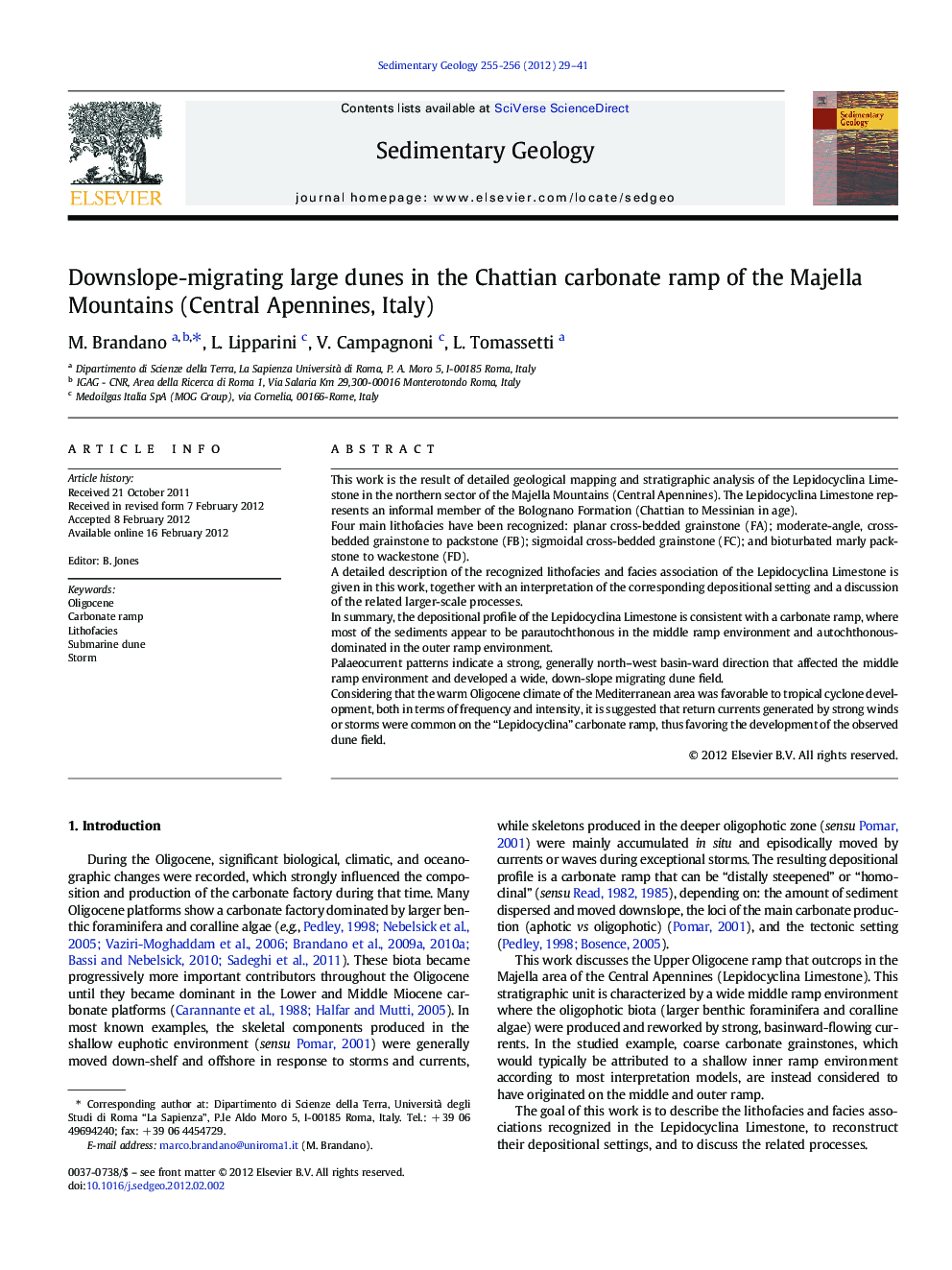| Article ID | Journal | Published Year | Pages | File Type |
|---|---|---|---|---|
| 4689847 | Sedimentary Geology | 2012 | 13 Pages |
This work is the result of detailed geological mapping and stratigraphic analysis of the Lepidocyclina Limestone in the northern sector of the Majella Mountains (Central Apennines). The Lepidocyclina Limestone represents an informal member of the Bolognano Formation (Chattian to Messinian in age).Four main lithofacies have been recognized: planar cross-bedded grainstone (FA); moderate-angle, cross-bedded grainstone to packstone (FB); sigmoidal cross-bedded grainstone (FC); and bioturbated marly packstone to wackestone (FD).A detailed description of the recognized lithofacies and facies association of the Lepidocyclina Limestone is given in this work, together with an interpretation of the corresponding depositional setting and a discussion of the related larger-scale processes.In summary, the depositional profile of the Lepidocyclina Limestone is consistent with a carbonate ramp, where most of the sediments appear to be parautochthonous in the middle ramp environment and autochthonous-dominated in the outer ramp environment.Palaeocurrent patterns indicate a strong, generally north–west basin-ward direction that affected the middle ramp environment and developed a wide, down-slope migrating dune field.Considering that the warm Oligocene climate of the Mediterranean area was favorable to tropical cyclone development, both in terms of frequency and intensity, it is suggested that return currents generated by strong winds or storms were common on the “Lepidocyclina” carbonate ramp, thus favoring the development of the observed dune field.
